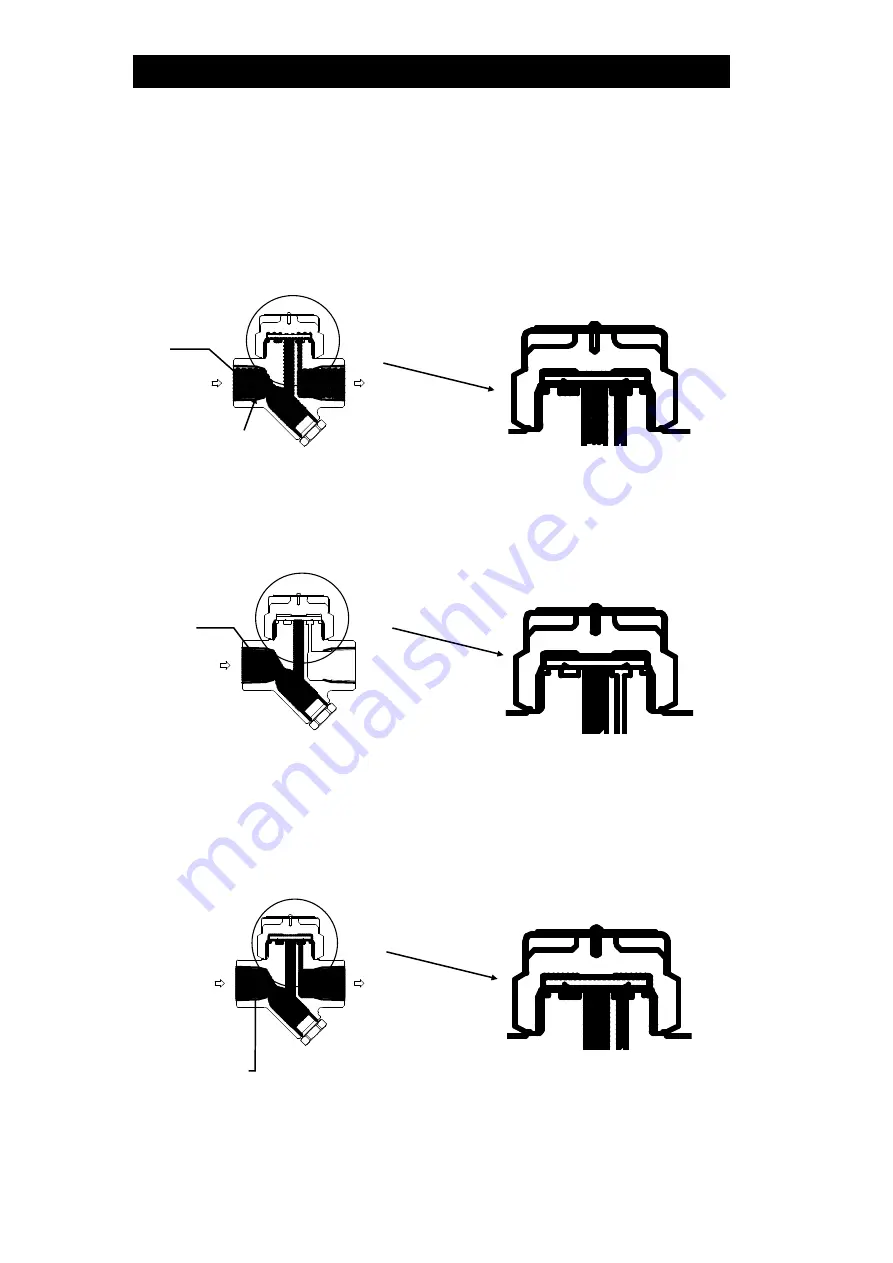
172-65563MAJ-03 (P46S) 6 Oct 2021
6
Operation
Principle of Air and Condensate Discharge
1. Start-up: Discharge of Initial Air and Cold Condensate
At start-up, the flow of large quantities of initial air and cold condensate lift the
disc off the seat, thus opening the valve. This allows for the rapid discharge of
initial air and cold condensate.
2. Steam Enters, Valve Closes
The rapid influx of steam creates a low-pressure region under the disc, which
suctions it onto the seat. The pressure chamber above the disc becomes a
high-pressure region when entering steam is compressed. This difference in the
pressures above and below the disc gives the closed valve a tight seal.
3. Condensate Discharge
When condensate enters the trap, the temperature in the pressure chamber
drops, causing the steam to condense and the pressure to drop. The inlet
pressure, which is now greater than the pressure pushing down on the disc,
opens the valve, thus allowing condensate to be discharged. When steam
again enters the trap, the valve closes, as in step 2. In this manner, condensate
is automatically and intermittently discharged as the valve opens and closes.
Air
Cold Condensate
Steam
Condensate




































